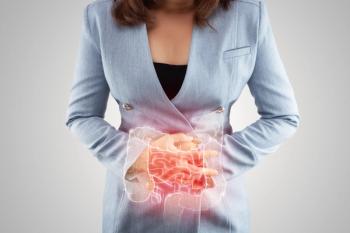
- Drug Topics May 2020
- Volume 164
- Issue 5
The Pharmacist's Role in Heart Health
Heart disease is so common among Americans that it claims 1 life every 37 seconds.
Heart disease is so common among Americans that it claims 1 life every 37 seconds. That number accounts
for approximately 647,000 deaths annually, according to the CDC. As health care providers often serving on the front lines, pharmacists have potentially underused opportunities to help keep patients’ tickers in tip-top shape.
The underutilization of pharmacists in wellness and disease-state management may come from the lack of recognition they receive for the value they add to the patient care equation, according to Andrew M. Freeman, MD, FACC, FACP, a cardiologist, cochair of the Nutrition & Lifestyle Work Group of the American College of Cardiology, and director of cardiovascular prevention and wellness at National Jewish Health in Denver, Colorado.
“For a long time, pharmacists have been very much underappreciated in day-to-day care,” he told Drug Topics®. “From a cardiovascular perspective on the inpatient side, they are an essential part of the team to make suggestions for things we doctors may not readily know offhand.”For example, Freeman appreciates having pharmacists give recommendations on tailoring drug therapy based on their assessments of electrolytes, allergies, and various interactions such as drug-drug, drug-nutrient, and drug-herbal interactions.
However, the diverse ways in which pharmacists can alter the patient experience transcend the support they offer physicians in drug therapy.
Twenty percent of hospital readmissions are linked to inefficiencies in the coordination of care. These challenges highlight additional gaps in the health care systems that pharmacists can help fill.
“Pharmacists have become essential to preventing readmissions because they provide education to patients at discharge,” Freeman said. “They help keep them from returning to the hospital and out of the clinic.”
Patients with recent cardiovascular events may require education on as many as 4 to 6 new medications that were started during hospitalization, according to Alison M. Walton, PharmD, BCPS, associate professor of pharmacy practice, ambulatory care clinical pharmacy specialist, and director of Healthy Horizons at Butler University College of Pharmacy and Health Sciences in Indianapolis, Indiana.
Patient education has also become extremely important in managing cardiological conditions such as hyperlipidemia and hypertension. Topics include healthy lifestyle habits as well as disease-state and drug information. Helping patients understand the importance of medication adherence and solving adherence-related problems is another element in the patient education spectrum.
“Since patients can’t feel their cholesterol or blood pressure levels, it’s difficult for [them] to realize the impact medications have on their heart numbers,” said Walton.
For that reason, educating patients on their medications is extremely important-especially as they transition through the health care system from different settings.
Additionally, the coronavirus disease 2019 (COVID-19) pandemic has created another much-needed opportunity for pharmacists to provide information to patients with cardiac conditions, especially as having preexisting conditions increases the risk of developing complications. Altered lifestyle habits as a result of the COVID-19 lockdown also pose further risks to such patients.
“As a result of COVID-19, our daily routines have significantly changed, and this may impact the lifestyle choices of our patients with disease,” said Walton.
The COVID-19 crisis has created some conditions that may limit some outdoor physical activities or force some patients to alter their eating habits in a potentially unhealthful way. A more sedentary lifestyle could negatively affect blood pressure and cholesterol. Further, with fresh produce now hard to come by, many patients may increase their consumption of frozen or canned products; as a result, they may also inadvertently increase their sodium intake.
“Throughout their career, a pharmacist may have multiple roles in the prevention and management of cardiovascular disease,” said Walton.
Pharmacists’ frequent interactions with patients create recurring opportunities to help optimize patient care. One illustration of a productive interaction is a pharmacist initiating a referral after an encounter in which a patient describes signs and symptoms of cardiovascular disease.
From Freeman’s perspective, one of the most critical ways in which pharmacists enhance patient care is by serving as an intermediary or conduit of sorts. “The role of the pharmacist is to make sure patients understand their therapies and appropriately utilize their drugs,”he said. “But sometimes the pharmacist is the link when other providers don’t speak to each other.”
As health care continues its massive overhaul, the links, or bridges, that pharmacists build with their unique blend of skills should only continue to grow.
Articles in this issue
over 5 years ago
Technology Innovations Transforming Pharmacy Practiceover 5 years ago
Social Media and COVID-19over 5 years ago
Pharmacy Job Demand Could Grow Because of COVID-19over 5 years ago
Investigational Drugs in the Pipeline for COVID-19over 5 years ago
Arm Yourself With Information During the COVID-19 Pandemicover 5 years ago
The Carbon Footprint in the Room: ‘Going Green’ in the PharmacyNewsletter
Pharmacy practice is always changing. Stay ahead of the curve with the Drug Topics newsletter and get the latest drug information, industry trends, and patient care tips.




































































































































